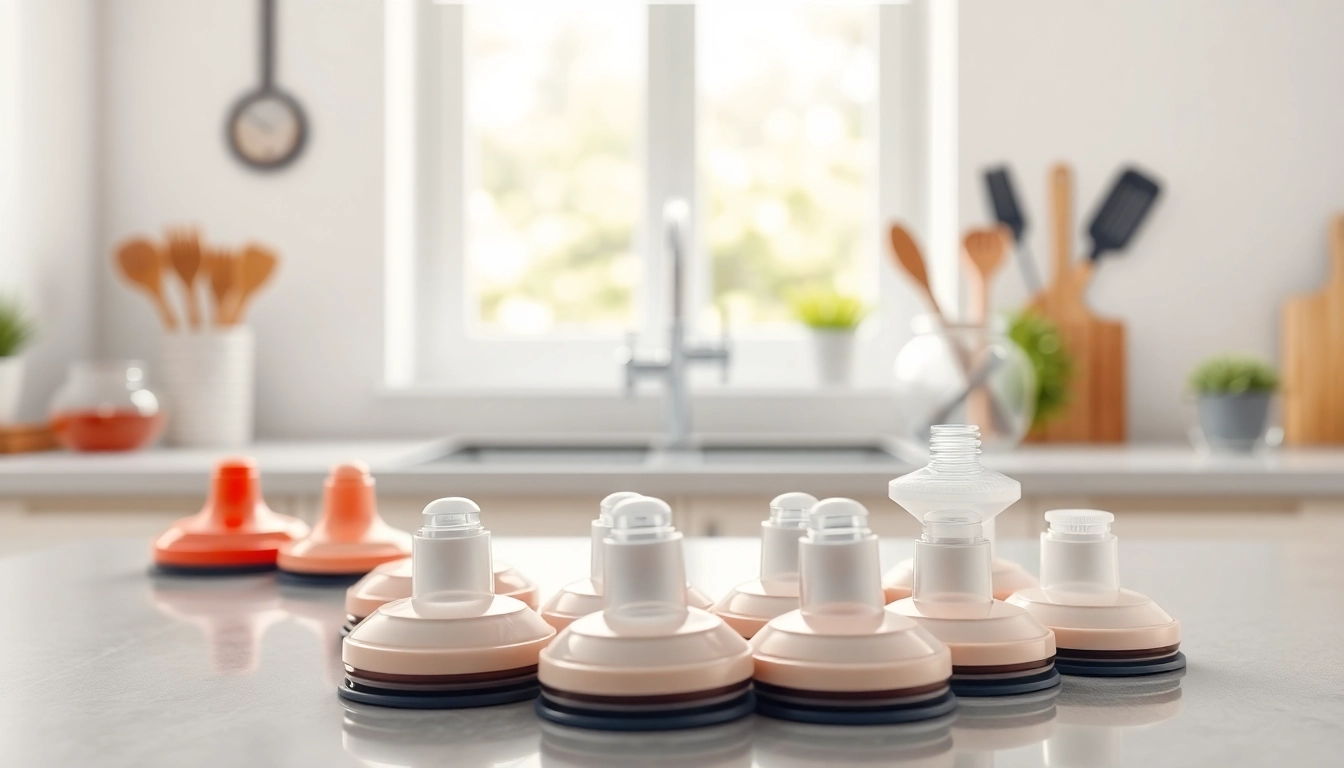
What is a Suction Cup?
Definition and Functionality
A suction cup, also known colloquially as a sucker, is a device that utilizes the physics of air pressure to adhere to smooth, nonporous surfaces. Its primary function is to create a vacuum seal around its edges, which effectively holds objects in place without the need for adhesives or mechanical fasteners. This mechanism relies on the principle that reducing the air pressure within a closed space creates suction, allowing the cup to stick firmly to surfaces such as glass, tiles, or metal.
Types of Suction Cups
Suction cups come in a variety of types, each designed for specific applications. They can be broadly classified into the following categories:
- Standard Suction Cups: Typically made from rubber or plastic, these are the most common type used in household applications.
- Heavy-Duty Suction Cups: Designed for industrial use, these are made from more durable materials to support heavier loads.
- Medical Suction Cups: Used in therapeutic practices, these cups are designed specifically for skin contact to promote cupping therapy.
- Vacuum Suction Cups: Often used in industrial automation, these cups create a strong vacuum seal for lifting and moving objects in machinery.
Common Uses in Everyday Life
Suction cups are ubiquitous in daily life and serve various purposes, including:
- Bathroom Accessories: Suction cups are commonly used to secure towel bars, soap dishes, and shower caddies to bathroom walls.
- Kitchen Organization: They are used to attach spice racks, pot lids, or utensils to wall surfaces in kitchens.
- Home Decor: Venturing beyond practicality, suction cups also help in hanging decorations or securing artwork to nonporous surfaces.
- Innovative Gadgets: Many modern gadgets incorporate suction cups for versatility, such as phone mounts or camera stabilizers.
How Suction Cups Work
Mechanism Behind Suction Cup Adhesion
The adhesion of a suction cup is based on the creation of a pressure differential. When a suction cup is pressed against a surface, it compresses the air inside the cup, expelling much of it. Upon releasing pressure, the resilient material of the cup tries to return to its original shape, creating a low-pressure zone inside the cup. The atmospheric pressure acting on the outside of the cup then holds it in place against the surface.
Material Science of Suction Cups
The effectiveness of a suction cup often depends on the material from which it is made. Typical materials include:
- Rubber: Provides good flexibility and elasticity, allowing for a strong seal.
- PVC: Often used in lower-cost options, PVC is durable but may have limitations in terms of temperature resistance.
- Silicone: Offers excellent temperature resistance and reusability, making it suitable for medical applications.
Factors Affecting Performance
Several external factors can affect the performance of suction cups:
- Surface Texture: Smooth, nonporous surfaces work best; rough or porous surfaces may prevent an effective seal.
- Temperature: Extreme temperatures can alter the physical properties of the suction cup material, affecting its adhesion.
- Load Weight: Each suction cup has a maximum load capacity. Understanding this is critical to ensuring safety and efficacy.
Applications of Suction Cups
Household Applications
Household suction cups are used in various ways to promote convenience and organization:
- Storage Solutions: Products like suction cup hooks allow users to maximize space without wall damage.
- Bathroom Products: Suction cups can hold everything from shower racks to dental organizers, facilitating accessible storage.
Industrial Uses
In industrial settings, suction cups play a critical role in operations:
- Material Handling: Suction cups are employed in automated systems for lifting glass panels or sheet metal.
- Robotic Applications: They are commonly found on robotic arms that automate tasks in manufacturing.
Medical and Therapeutic Uses
Beyond their physical functions, suction cups are also vital in healthcare:
- Cupping Therapy: An alternative medicine technique that involves placing suction cups on the skin to enhance circulation and promote healing.
- Medical Tools: Suction cups are utilized in surgical and diagnostic procedures, emphasizing their versatility in medical fields.
Tips for Choosing the Right Suction Cup
Choosing Based on Surface Type
When selecting a suction cup, consider the surface type where it will be used. Smooth tiles or glass surfaces are optimal for traditional suction cups, while textured or porous surfaces may necessitate specialized adhesives or different types of fasteners.
Load Capacity Considerations
Understanding the load capacity of a suction cup is essential to ensure it can hold the intended weight. Manufacturers often provide maximum weight specifications, which should be adhered to for safety reasons.
Maintenance and Care for Longevity
To maintain optimal functionality, suction cups should be regularly cleaned and inspected for wear. Dirt and grime can hinder their ability to seal effectively, while exposure to extreme temperatures can degrade the materials over time.
Frequently Asked Questions about Suction Cups
What are the limitations of suction cups?
While suction cups are versatile, they have limitations. They generally cannot adhere to porous surfaces, and their effectiveness decreases in high-temperature environments or if the surface is not clean and smooth.
Can suction cups be reused?
Yes, many suction cups are designed for reuse. However, their lifespan can depend on material quality and care. Make sure to clean them post-use to maintain adhesion qualities.
How to enhance suction cup effectiveness?
To enhance suction cup effectiveness, ensure the surface is clean and free from dust or grease. Additionally, warm the suction cup slightly before applying it to a cold surface—this can improve its ability to form a seal.
In summary, suction cups are integral devices that leverage air pressure to secure items on smooth surfaces across various applications. Their adaptability, from household uses to industrial and medical fields, showcases their versatility. For more insights into products related to suction cups, exploring different types and their specific use cases can provide further understanding of their capabilities and benefits in our lives.